News
Sharks: Wonderful Beasts and Where to Find Them
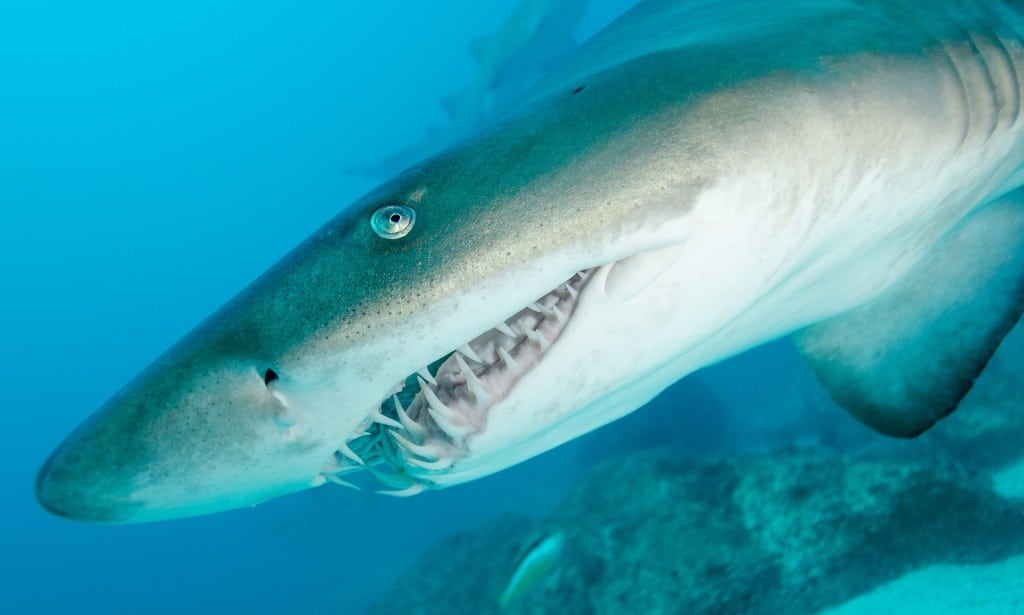
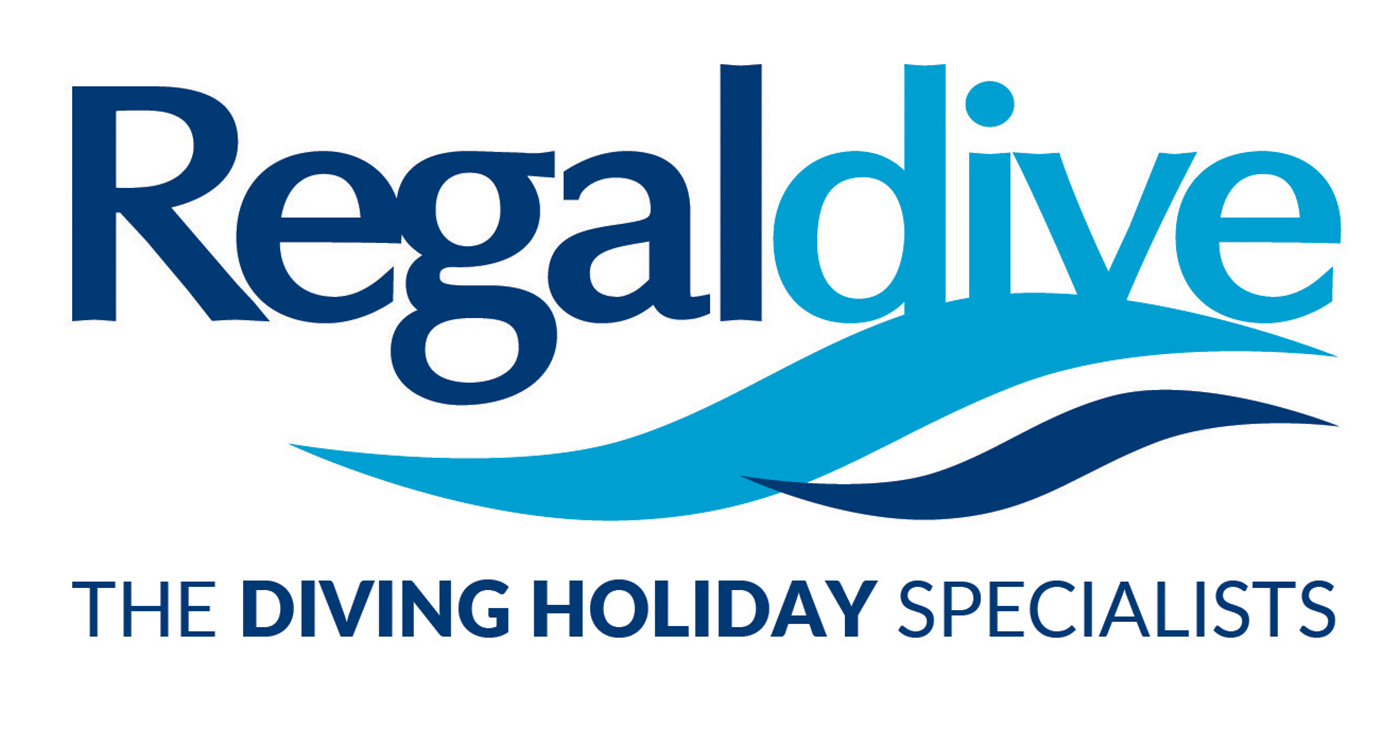 Every Week is Shark Week at Regaldive. We are glad that it is currently Shark Week, as sharks are a firm favourite at the Regaldive office and they deserve to be better protected. Every week we are sending our guests to numerous worldwide locations that are ideal for diving with sharks. The last couple of years have been great for shark encounters and hopefully this trend will continue. If you are a shark fan, Regaldive have a great range of holiday options. Here is a taster of our top locations worldwide for Diving with Sharks…
Every Week is Shark Week at Regaldive. We are glad that it is currently Shark Week, as sharks are a firm favourite at the Regaldive office and they deserve to be better protected. Every week we are sending our guests to numerous worldwide locations that are ideal for diving with sharks. The last couple of years have been great for shark encounters and hopefully this trend will continue. If you are a shark fan, Regaldive have a great range of holiday options. Here is a taster of our top locations worldwide for Diving with Sharks…
GUADALUPE ISLAND
Dive to 30 feet and go face to face with great white sharks! Guadalupe Island is a volcanic island 150 miles off the west coast of Baja California and it outperforms every other great white shark destination with shark-seeing consistency and beautiful diving conditions.
Great white shark encounters at Guadalupe Island are nothing short of spectacular. It’s the best destination in the world for calm, clear water and a consistently high probability of multiple shark encounters. The bay itself is home to over 200 recognised individuals, ranging from 12 to 19 feet long. At times, guests have seen as many as nine sharks on one dive!
SOCORRO ISLANDS
The wild, remote and exhilarating Socorro Islands, Mexico are famous for their big animal encounters. Divers will see many species of shark, including Hammerheads, Whitetips, Silvertips, Silkies, Tiger & Galapagos Sharks. Whale sharks can be found between November – December and late April – May.
The area is also famous for close encounters with the Giant Pacific Manta Ray, which can grow to 22 feet across. The Mantas seek out divers to interact with and play in their exhaled bubbles. There’s little doubt that this is the best location for the closest Manta interactions.
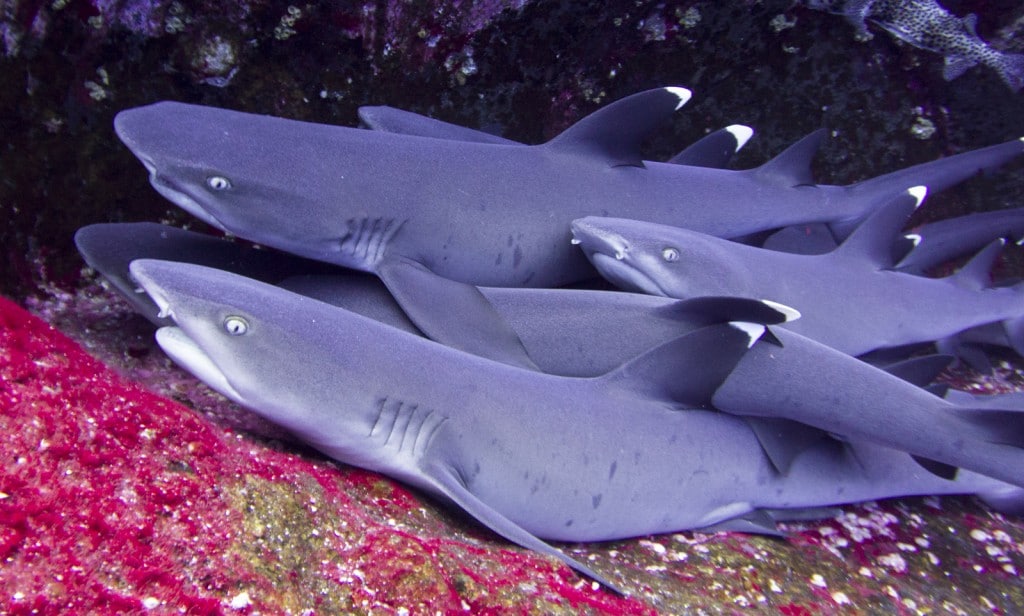
Photo: John Butland
SOUTH AFRICA
If you want some great shark action, what could be better than the shark hotspots of South Africa and Mozambique? Although there’s always plenty to see, including Hammerheads, Tigers, Blacktips and Bulls, May is the time that the Ragged Tooth Sharks take up residence on Aliwal Shoals. A shark to impress your non-diving friends, as with their mouth full of big teeth, they look far scarier than they actually are. ‘Raggies’ usually stay until at least the end of November, so now’s the time to plan your visit.
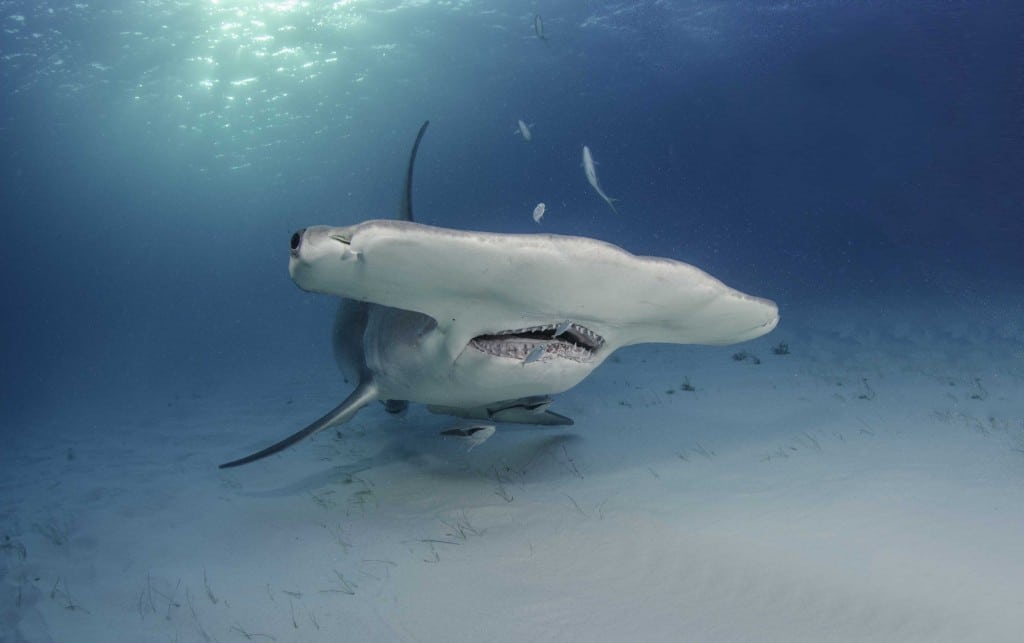
Photo: Malcolm Nobbs
THE MALDIVES
The Maldives is a popular location for seeing a few varieties of shark, most commonly Whitetips and Grey Reef Sharks. Although the Whitetips are usually very calm and lethargic during the day, they certainly get a bit more active at night. Often seen darting around the reef, trying to beat each other to the next unsuspecting fish to snack on.
Our guests returning from Maldives Liveaboards are giving enthusiastic reports from of a very interesting night dive they took part in. Many of them have greatly enjoyed doing a night dive with Nurse Sharks. Although one of the most docile of sharks, it turns into a very exhilarating experience when you get 40 to 50 Nurse Sharks swarming all around you! Just hang onto your gear and prepare for the odd nudge.
THE BAHAMAS
The Bahamas are justifiably famous for their shark diving. Some sharks can be seen very close and personal, mainly Caribbean Reef Sharks, Nurse Sharks and Lemon Sharks, but others such as Bull Sharks, Hammerheads and even Oceanic Whitetips can all be found, with the waters of Nassau and the Exuma Cays being the most easily accessible areas.
A famous location that is worth a visit in June, July and August is Tiger beach. So called because of the numbers of Tiger sharks that turn up in the warm shallow waters at that time. Known for coming in nice and close, some of the individual sharks, such as Emma, are famous the world over. With years of experience the operators that visit the area will provide you with an experience that you will have difficulty finding anywhere else.
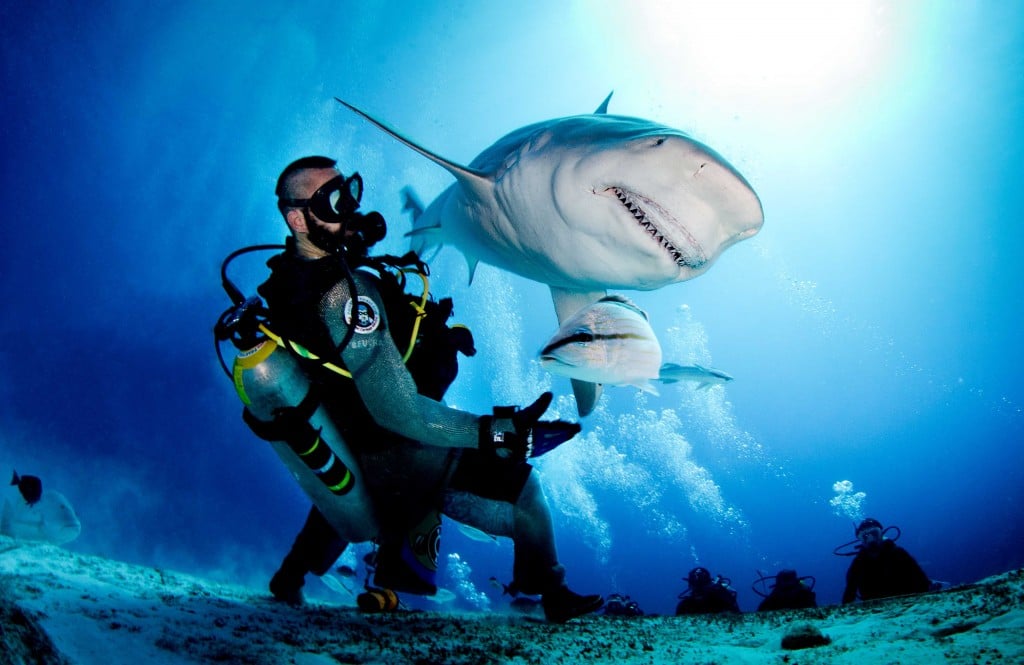
Photo: Malcolm Nobbs
SUDAN
Many of Sudan’s varied dive sites hold an almost mythical status with divers from around the world. Sudan’s coastal waters are also recognised as one of the best places in the world for Shark enthusiasts to encounter schools of scalloped hammerheads, alongside many other species of shark.
Our colleague Nigel gave us a taste of the shark action from his recent trip to Sudan and told us: “we were joined by a huge school of hammerhead sharks: above us, below us, in the distance, right next to us: they were everywhere. We were all trying to look in every direction at once. When we got back on board my partner said it had been ‘raining hammerhead sharks’. We all knew what she meant.”
THE GALAPAGOS
The seas surrounding the Galapagos support a large concentration of the marine life that makes these islands such a superb dive destination. Certainly no dive itinerary to the Galapagos is complete without a visit to the remote outposts of Wolf & Darwin to the north. Schools of hammerheads, as well as dolphins and rays make these islands a real highlight for divers. The whale shark aggregation occurs in the warmer water surrounding these islands. Many other shark species also make regular appearances, including species that you are unlikely to see elsewhere, including the Galapagos Shark. Although Hammerheads are seen year round, the biggest aggregations are usually in the Autumn.

Photo: Malcolm Nobbs
THE RED SEA
The Red Sea has always been good for sharks, but the last couple of years have been exceptional, especially on the ‘Simply the Best’ itinerary. Maybe it’s because there are less divers about. We are hearing feedback such as “saw hammerheads on every dive at Daedalus” and “great to get so close to so many Oceanic Whitetips” from those on our Red Sea Liveaboard trips. The best times for these encounters now seems to be starting a bit earlier too, around June, and running right through to November.

Photo: Malcolm Nobbs
COCOS ISLAND
A few years ago Cocos Island was christened ‘The Island of the Sharks’ by documentary makers, and with very good reason. This lush, green, uninhabited island, 340 miles from the Pacific coast of Costa Rica, boasts numerous species of shark, including Whitetips (on every dive!), Tigers, Whale Sharks, Silkies and Galapagos Sharks.
But the biggest draw here is the Hammerheads that come into the numerous cleaning stations, allowing easy, close up viewing. Also they can often be seen schooling in their tens or even hundreds, so keep your fingers crossed for that amazing experience.
The UNESCO designated World Heritage Site certainly holds its place at the pinnacle of the world’s best shark diving locations.
To find out more about our shark diving locations, call the friendly Regaldive team on 01353 659999.
News
Book Review: Fire on Monroe Bravo by Fred Lockwood

Fire on Monroe Bravo is the latest book in the Jack Collier series by Fred Lockwood. Our story begins with our lead characters, Jack and Sandro, owners of Marine Salvage & Investigation Company, arriving on the Monroe Bravo Oil & Gas Platform in the North Sea. Having secured a contract for their vessel the MV Stavanger to act as support ship to the platform for TransGlobal Oil, our protagonists are on a celebratory visit.
However almost as soon as they arrive a series of explosions rock the platform, causing huge damage, loss of life and the very real danger of a massive human, ecological and financial disaster.

As the danger mounts for both our heroes and the surviving workers, Jack and Sandro will have to escape the inferno, all while trying to save the platform and the men still trapped unable to help themselves.
The disaster sets the scene for the unfolding story lines following the fate of the platform and our main characters, the police investigation into a suspected terrorist act and the actions of TransGlobal Oil as they attempt to navigate the pubic outcry and financial repercussions.
In his eighth book, Fire on Monroe Bravo, Fred Lockwood delivers an explosive thriller, with plenty of above and in-water drama, and our heroes fighting for survival, what more can you ask for?
We thoroughly recommend this read and look forward to the next in the series. For more information about his book series, you can check out the reviews of his previous books here on Scubaverse.
- Title: Fire On Monroe Bravo
- Author: Fred Lockwood
- ISBN: 979-8325324536
Available in a paperback version and for Kindle from Amazon and book stores.
Blogs
Alonissos: The complete diving destination (Part 1)

In June we were incredibly fortunate to be invited to dive in Alonissos, a small Greek Island in the Sporades island chain located in the North Aegean Sea. While I have long been a big fan of the Greek Islands as a great holiday destination, I had not had the opportunity to do any diving on previous visits and Mike and I were extremely excited to see what Alonissos had to offer both above and below the surface!

The Sporades are easily accessible via the airport in Skiathos (the first island in the chain), which is served by Jet2 flights from all major UK airports from May through October. Numerous ferries and charter boats make island hopping from Skiathos Town a breeze. After an hour boat ride, the picturesque port of Patitiri was a wonderful introduction to Alonissos, where we were met by our gracious hosts Kostas of Albedo Travel and Dias of Alonissos Triton Dive Center. Mike and I were delighted to be staying at the Paradise Hotel, aptly named for its stunning views over the sea and great location for walking to the waterfront.

Alonissos is beautifully situated in the National Marine Park of Alonissos and the Northern Sporades, the largest marine protected area in Europe. The surrounding seas offer fabulous marine life, including incredibly rare species such as the Mediterranean monk seal. They boast deep walls covered in gorgonians and sponges, stunning topography with caverns, swimthroughs and pinnacles, and the first accessible ancient shipwreck from 500BC!

In locations where historical sites have been reported, the waters are largely restricted, but with collaboration between government, underwater archeologists and dive centres, incredible underwater museums are being created for a truly unique diving experience. Alonissos is home to the first of these, the Ancient Shipwreck of Peristera Accessible Underwater Archeological Site. The chance to dive into history (along with reports of healthy reef life and amazing underwater topography) meant Mike and I were keen to get in the water.

Our introduction to the diving around Alonissos was at the Agios Georgios Pinnacles, in the channel between Alonissos and Skopelos. This fantastic site was named “The Chimney,’ and proved to have a huge amount to see. We got to a decent depth here (over 25m), and marvelled at a colourful reef wall with a wonderful swim through whose rocky walls were absolutely covered with life. As well as brilliant topography there was no shortage of macro life here. We saw numerous nudibranchs, five different species in total. The second dive at Mourtias reef nearby was a shallower dive along a nice wall with lots of crevices. Several moray eels and grouper called this site home. We enjoyed looking in the crevices for lobster and smaller benthic life, such as cup corals and tunicates.

Our itinerary allowed us two dives a day with afternoons left to explore the island with our hire car and evenings to enjoy the famous Greek hospitality. This proved to be a lovely mix of in-water and land based diversions.

The next days diving to the Gorgonian Gardens and Triton’s Cave was to be even better! These two stunning sites are nothing short of fabulous. The Gorgonian Gardens was a deep wall near to the Agios Georgios islands. The ever-present currents in this deep channel meant that the sea life was amazing … the namesake Gorgonian sea fans dotted the wall at a depth of 30 to 50 meters, getting ever larger the deeper we went. Above 30m was by no means less beautiful, with sponges, corals, scorpionfish, moray eels and some rare and colourful nudibranchs.

The second shallower dive of the day was to Triton’s Cave or the Cavern of Skopelos, on the east side of that island. The spectacular rock formations had wild striations both above and below the water making a truly epic topography. The cavern entrance was at 14m, and big enough for a buddy pair, winding up to 6m and passing two beautiful windows out into the blue. Emerging from the cavern, the light at the shallower depths and the incredible rock formations made for a fantastic gentle swimming safety stop and we all surfaced by the boat with massive grins.

Check out our next blog :Alonissos: The complete diving destination (Part 2)” to hear about our amazing dive on the 2500 year old Peristera Wreck!
Thanks to:
Alonissos Triton Dive Center https://bestdivingingreece.com/
Albedo Travel https://alonissosholidays.com/activities/
Paradise Hotel https://paradise-hotel.gr/
Alonissos Municipality https://alonissos.gr/en/
-

 Blogs2 months ago
Blogs2 months agoDiving With… Nico, Ocean Earth Travels, Indonesia
-

 News1 month ago
News1 month agoMurex Bangka Announce New Oceanfront Cottages & Beachfront Dining
-

 Blogs2 months ago
Blogs2 months agoA new idea in freediving from RAID
-

 Marine Life & Conservation1 month ago
Marine Life & Conservation1 month agoIceland issue millionaire whale hunter a licence to murder 128 vulnerable fin whales
-

 Marine Life & Conservation2 months ago
Marine Life & Conservation2 months agoThe Shark Trust Great Shark Snapshot is back
-

 News3 months ago
News3 months agoCharting New Waters; NovoScuba Goes Global with the Launch of their Revolutionary Dive Training Agency!
-

 Gear News1 month ago
Gear News1 month agoNew Suunto Ocean – a dive computer and GPS sports watch in one for adventures below and above the surface
-

 Marine Life & Conservation Blogs2 months ago
Marine Life & Conservation Blogs2 months agoBook Review: Plankton















